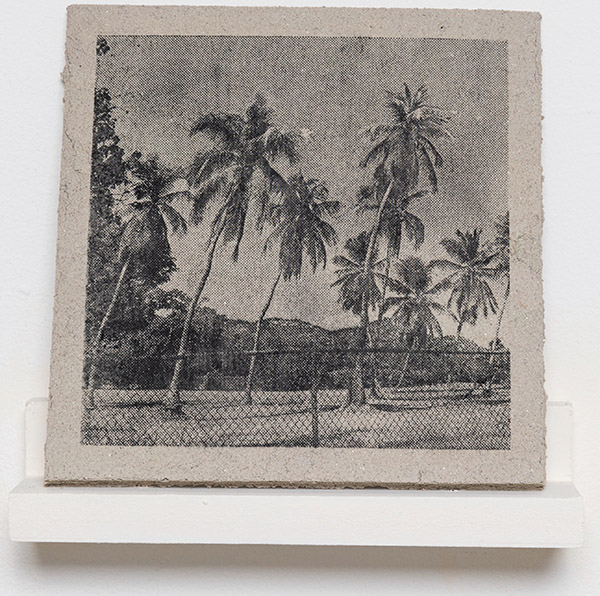Mariana Ramos Ortiz: Contra viento y marea
Central Contemporary Arts • Providence, RI • centralcontemporaryarts.org • Through December 8, 2022

Even the title of Mariana Ramos Ortiz’s debut exhibition at the newly opened Central Contemporary Arts evokes a clever precarity, one of the threads elegantly woven through her exhibition of (un)familiar forms in sculpture, print, and video. Contra viento y marea literally evokes their medium of sand, subject to both wind and tide, and idiomatically calls for resistance against seemingly unstoppable forces. Ramos Ortiz’s semi-permanent works conjure fantasies of Puerto Rico in order to crumble them.
Absent are the azure blues of a tropical paradise. We are not welcomed onto white sand beaches, but are asked to consider the literal and poetic metaphors of sand—an oft-contested material in coastal economies. For instance, without a fixing agent, the cast-sand Breezeblocks (verja) doesn’t possess the protective function of their concrete, hurricane-resistant namesake. Their sturdy form belies their fragility, while also recalling the indelible presence of colonialism, as in this architectural reference to mid-century modern U.S. design and material, visible in sites such as Levittown, PR, built in 1963; Ramos Ortiz’s significations are multiple. Similarly, the sandbox constructions of Playgrounds refer to the exploitation of the island as a “taxless playground of the rich.” The photograph printed on the sand depicts the artist’s hometown of Cabo Rojo. In this material format, the landscape is imagined both as vulnerable to shifting conditions yet protected from touristic intrusions. For all the installations’ precarity, the artist continually returns to themes and forms of protection, or as co-curator Melaine Ferdinand-King writes of the Tormenteras, “[t]he hurricane storm shutters…offer a reading of the tropics that reflect its constant fluctuation between fragility and strength…and affirm everyday materials as sites of resistance.” Ramos Ortiz invites us to embody her fluency in conceptual materiality in La Peregrina, a massive ouroboros of a sand-hopscotch board, where we are invited to play, to fail, to resist, and re-signify.
At the time of the show’s opening, Puerto Rico is in the direct aftermath of Hurricane Fiona, impacted just before the fifth anniversary of Hurricane Maria. The legacies of colonial exploitation which leave the island vulnerable to increasingly frequent climate disasters make all the more urgent such explorations of futurity, as Ramos Ortiz deftly shapes and reshapes.
—Elizabeth Maynard
